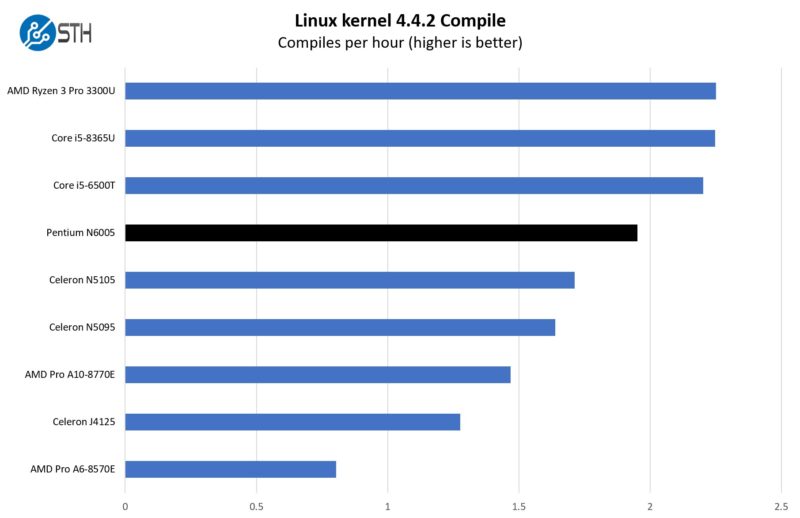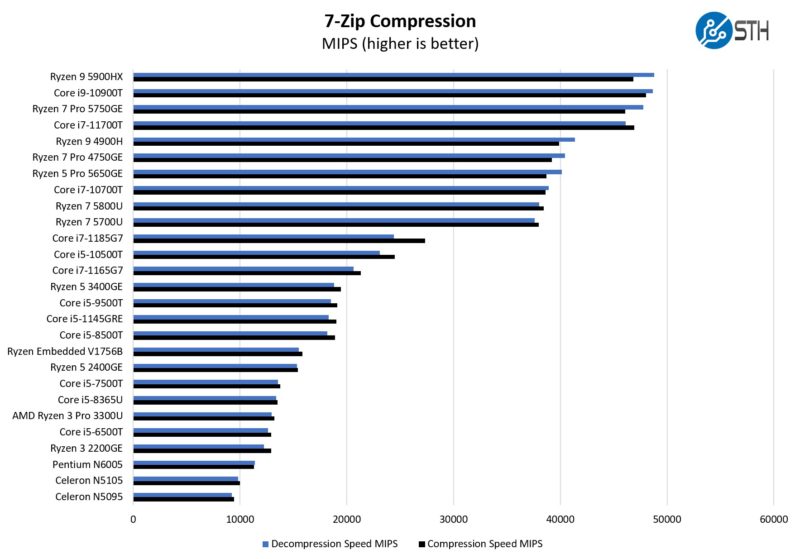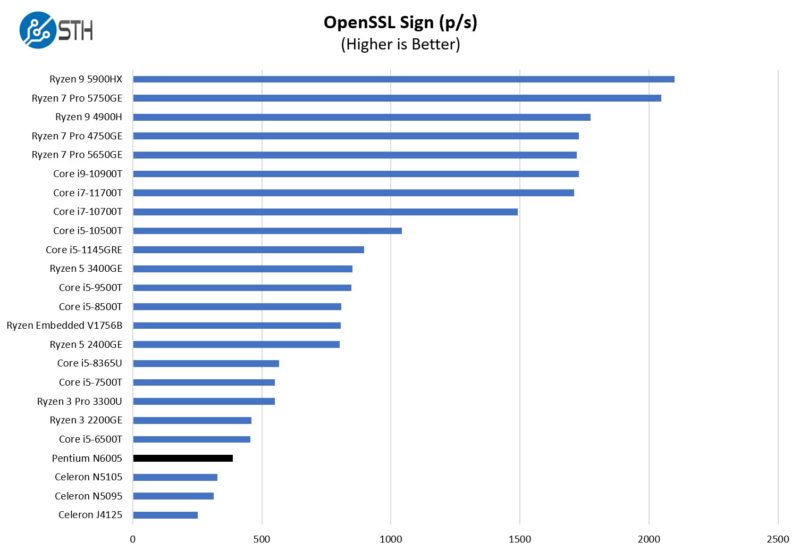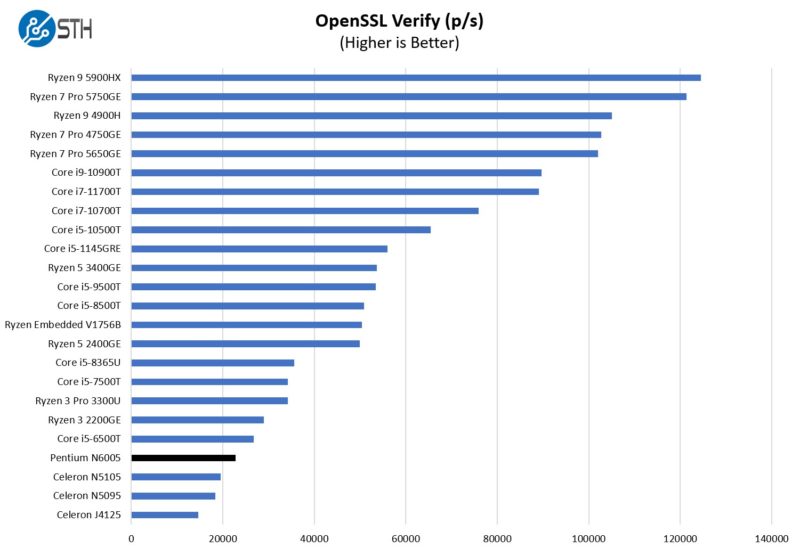6x 2.5GbE Intel Pentium N6005 Fanless Performance
We have looked at a number of Jasper Lake systems previously. This system followed the previous 4x 2.5GbE by figures that were within +/-1% of our previous runs.
Python Linux 4.4.2 Kernel Compile Benchmark
This is one of the most requested benchmarks for STH over the past few years. The task was simple, we have a standard configuration file, the Linux 4.4.2 kernel from kernel.org, and make the standard auto-generated configuration utilizing every thread in the system. We are expressing results in terms of compiles per hour to make the results easier to read:

Again, we just wanted to show some relative performance ranking here. This unit is faster due to higher clock speeds than the N5105.
7-zip Compression Performance
7-zip is a widely used compression/ decompression program that works cross-platform. We started using the program during our early days with Windows testing. It is now part of Linux-Bench.

At the same time, it is nowhere near the speed of faster modern systems. Even the 11th gen Intel Core fanless systems we looked at previously.
OpenSSL Performance
OpenSSL is widely used to secure communications between servers. This is an important protocol in many server stacks. We first look at our sign tests:

Here are the verify results:

Again, we hope that gives some sense of why we would recommend the N5105 over the N6005. The performance is better, but we have seen in these units that it comes with a major trade-off for power consumption and initial purchase price. We sense that if you want more performance and perhaps better overall performance per watt, going to larger CPUs can actually be better.
A Word on pfSense and OPNsense
For our pfSense testing, we set the unit up into pairs of 2.5GbE links. We then passed traffic through the pairs using iperf3, which was not an issue just passing NAT traffic. Too many firewall rules would hurt performance in this scenario, but in a 2.5GbE WAN only scenario where you have 2.5GbE WAN and then other ports for other traffic that you are not trying to run extensive firewall rules, then this was OK. We managed to hit line rate on a single 2.5GbE link both in simple NAT as well as with 10K firewall rules in both physical and virtualized environments across a single pair. If you want to get into a lot of IDS and across all ports, get a bigger CPU. For many of our readers, this is going to be fine.
This generally holds true for all of the Jasper Lake units versus the 11th gen Core units.
Next, let us get to power consumption.




Pretty neat, we deploy on R630 servers with 10Gbe and 16Core/32Thread Xeons on raid 5 SSDs and 128G ram.
Really interesting kit here. I am currently waiting on the emergence of embedded systems with Alder Lake CPUs and the R680E chipset and multiple i225 NICs. These seem to be imminent, although I’m not sure that 35W Pentium Gold can be crammed into a fanless.
Ips throughput?!
“Our suggestion is to expect the fan to run at 100%”
No way to control it seeing as it’s a 4pin header?
Topton now has 12th gen for 195€ (pre-tax but with delivery). I feel I personally made this happen by ordering an 11th gen recently :s